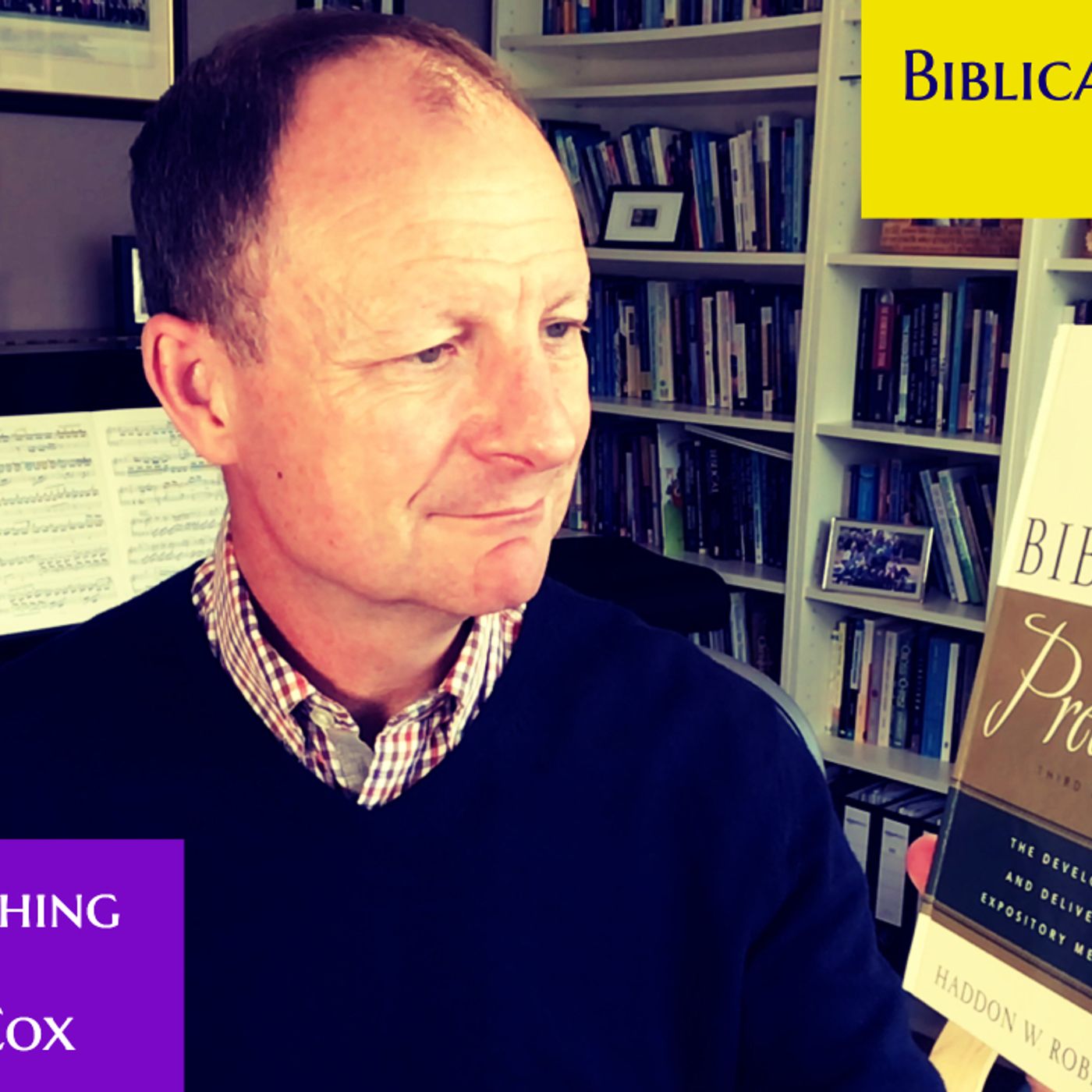
S2 Ep2110: Tuesday Teaching Tip 331 | Biblical Preaching - Part 3 | Tools of the Trade | Malcolm Cox
 2023-10-03
2023-10-03
Download
Right click and do "save link as"
Tuesday Teaching Tip 331 | Biblical Preaching - Part 3 | Tools of the Trade | Malcolm Cox
Point to consider
When we talk about tools, we are not talking about engineering a sermon, nor producing a formula. My wife is a doctor, and once she described practising medicine as being part science and part art. She meant to convey that although the science needs to be robust, if that is your primary focus, it can obscure the person you are meant to be treating. Who wants to be treated by a Doctor who doesn't listen to you, fails to acknowledge your presence, and does not treat you as an individual? Similarly, no so-called technique for lesson preparation will work for all people in all contexts. Nor will one method work for one person all the time. Therefore, as we explore the tools we use and the ways in which we use them, let's do so with half an eye on how they may be utilised flexibly. Alternatively, those who approach preaching as ‘from the heart’ and pay lip service to exegesis are the equivalent to the Doctor who treats their patients according to folklore, feelings and fantasy. That’s not a Doctor I want looking after my health. Effective preaching and teaching is a blend of ‘art’ and ‘science’. In this episode we will focus on the latter more than the former, but both are necessary.
Chapter 3: Tools of the Trade
Point to consider
When we talk about tools, we are not talking about engineering a sermon, nor producing a formula. My wife is a doctor, and once she described practising medicine as being part science and part art. She meant to convey that although the science needs to be robust, if that is your primary focus, it can obscure the person you are meant to be treating. Who wants to be treated by a Doctor who doesn't listen to you, fails to acknowledge your presence, and does not treat you as an individual? Similarly, no so-called technique for lesson preparation will work for all people in all contexts. Nor will one method work for one person all the time. Therefore, as we explore the tools we use and the ways in which we use them, let's do so with half an eye on how they may be utilised flexibly. Alternatively, those who approach preaching as ‘from the heart’ and pay lip service to exegesis are the equivalent to the Doctor who treats their patients according to folklore, feelings and fantasy. That’s not a Doctor I want looking after my health. Effective preaching and teaching is a blend of ‘art’ and ‘science’. In this episode we will focus on the latter more than the former, but both are necessary.
Chapter 3: Tools of the Trade
- Choose the passage to be preached: In my opinion there is a balance to be found between choosing texts and topics which are meaningful to you and of immediate relevance to your congregation, as well as thinking systematically about the biblical education of your faith community. Is there a balance of old and new Testaments? How are you doing covering a mix of genres -– parables, prophecy, poetry, narrative etc? In the book you will find more on the issues of thought units; topical exposition and sermon length.
- Study Your Passage and Gather Your Notes: It should go without saying that we need our own ideas about a text. Before you use the scholarship of other people, valuable as it is, take the time to read the passage in more than one translation, and make your own notes on the verse, paragraph, or chapter you are planning to use for your lesson. Be systematic. Keep your notes in a book, a folder, in a file on a computer, or within some Bible software. In the book you will find more on the issues of: context; Lexicons; Concordances; Grammars; Word-Study Books; Bible Dictionaries and Encyclopaedias; Commentaries; Bibliographies; Other Tools
- As you study the passage, relate the parts to one another to determine the exegetical idea and its development: A chasm separates what a passage is saying and what it means. That chasm is bridged by asking questions of the text. For example, in Mark 6:47-50 we are told that Jesus walked on the lake. To simply restate that information will not a sermon make. We must enquire as to the passage’s purpose. That means asking ourselves why Mark included this incident. What comes before and after? Is it important that it comes after the feeding of the 5000? You would need to ask yourself what that's about in order to determine if the context is significant. How does the passage fit with the rest of Mark’s emphasis? We would also want to look at the wider biblical context. For example, is there any significance to the mention of the mountainside in verse 46? What was Hebrew thinking about bodies of water and wind? Again, what is the purpose of this incident? Once we can state that in our own words, we can move on. In the book you will find more on the issues of: The subject and the complement.
- Conclusion: as Robinson says, “One device you may find helpful as to paraphrase the passage in your own words.” “At this point…you should be able to do two things: first, to state the idea of the passage in a single sentence…; and second, to state how the parts of the passage relate to the idea." This is hard work and takes time, but if you get this done well, the rest of the lesson will come together much more easily.
Consider joining AIM UK&Ireland to develop your understanding of Scripture: https://aimukandireland.com/. Our current module is Homiletics (the preparation and delivery of lessons).
Contact us here with enquiries: courses@aimukandireland.com
The website can be found here: https://aimukandireland.com
Please add your comments on this week's topic. We learn best when we learn in community.
Do you have a question about teaching the Bible? Is it theological, technical, or practical? Send me your questions or suggestions. Here's the email: [malcolm@malcolmcox.org](mailto:malcolm@malcolmcox.org).
If you'd like a copy of my free eBook on spiritual disciplines, "How God grows His people", sign up at my website: http://[www.malcolmcox.org](http://www.malcolmcox.org/).
Please pass the link on, subscribe, and leave a review.
Remember to keep calm, and carry on teaching.
God bless, Malcolm
Contact us here with enquiries: courses@aimukandireland.com
The website can be found here: https://aimukandireland.com
Please add your comments on this week's topic. We learn best when we learn in community.
Do you have a question about teaching the Bible? Is it theological, technical, or practical? Send me your questions or suggestions. Here's the email: [malcolm@malcolmcox.org](mailto:malcolm@malcolmcox.org).
If you'd like a copy of my free eBook on spiritual disciplines, "How God grows His people", sign up at my website: http://[www.malcolmcox.org](http://www.malcolmcox.org/).
Please pass the link on, subscribe, and leave a review.
Remember to keep calm, and carry on teaching.
God bless, Malcolm
More Episodes
012345678910111213141516171819
Create your
podcast in
minutes
- Full-featured podcast site
- Unlimited storage and bandwidth
- Comprehensive podcast stats
- Distribute to Apple Podcasts, Spotify, and more
- Make money with your podcast
It is Free
- Privacy Policy
- Cookie Policy
- Terms of Use
- Consent Preferences
- Copyright © 2015-2024 Podbean.com






